|
19 to
35 Piccadilly
The second block along Piccadilly, between Oldham Street and Lever Street, contains just three buildings. On the corner with Oldham Street is a large Portland Stone building built in 1928. At the time it was the largest Woolworth's store in Europe. When I took the image below, in March of 2014, it had recently been converted into a Morrison's local store, a Nando's and a Zizzi's at street level. Above is a new Travelodge hotel. 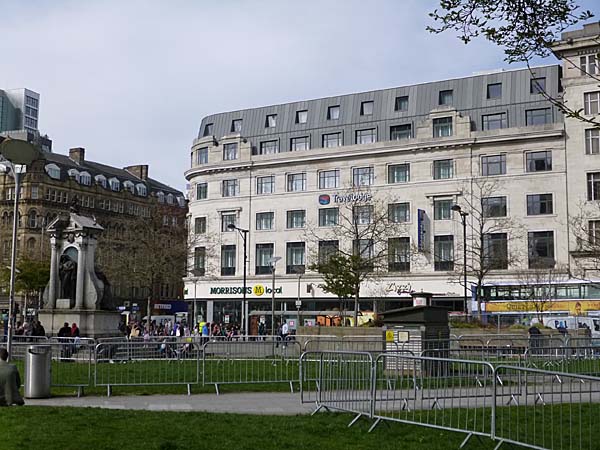 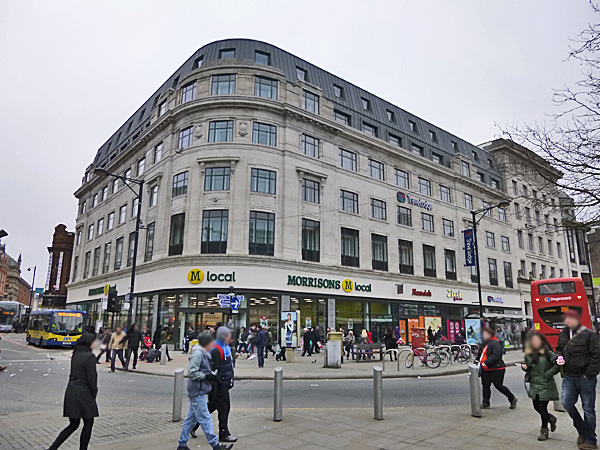 Prior to this, the upper floors were
deserted and a Noble's Amusements occupied the street
level.
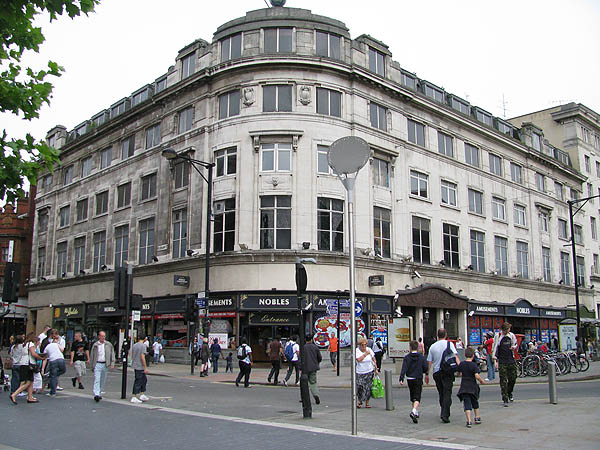 Below is a photograph of a Johnny Walker "Whisky Tot" display in Woolworth's window created by Marie Cotton in 1929. It is shown here with the permission of Les Cotton. 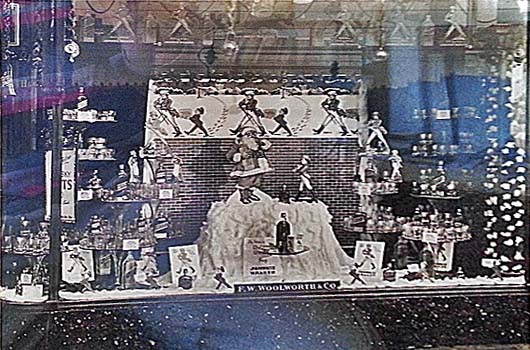 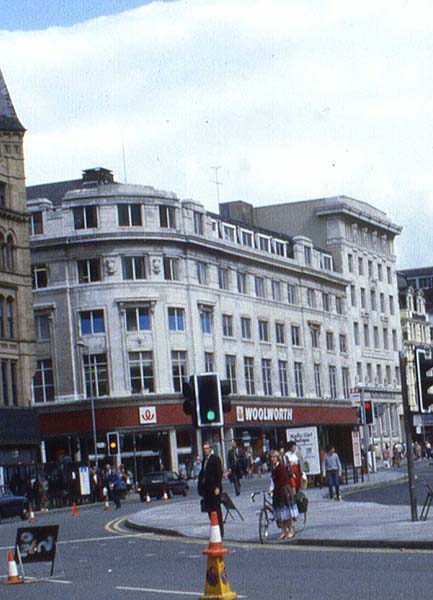 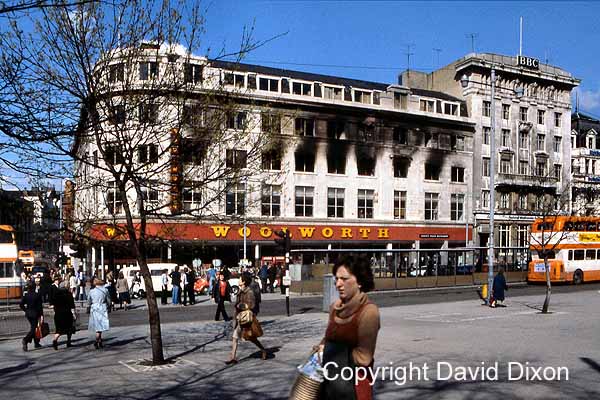 The image above,
shown here with the permission of David
Dixon, shows Woolworth's following a deadly
fire, that started around 1 p.m. on May 8th,
1979. A damaged electrical wire in the
vicinity of piled furniture started a blaze that
resulted in 9 shoppers and one staff member being
killed. So significant was the fire that it
resulted in the routine installation of sprinkler
systems, which Woolworth's didn't have, in large
retail stores. It also led to changes in the
material used in soft furnishings to reduce the
hazards created when the stuffing was exposed to
fire.
Next door is a building by Murgatroyd for the Manchester & Salford Bank. It is also built of Portland Stone but with a lot more decoration including a row of lions. At one point it was the Imperial Hotel and in my teenage years it was owned by the BBC. You can see the BBC sign at the top of the building, in the image above. Today it is a branch of NatWest. 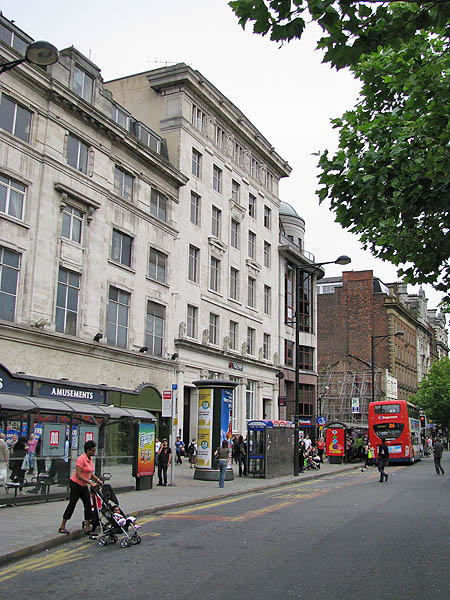 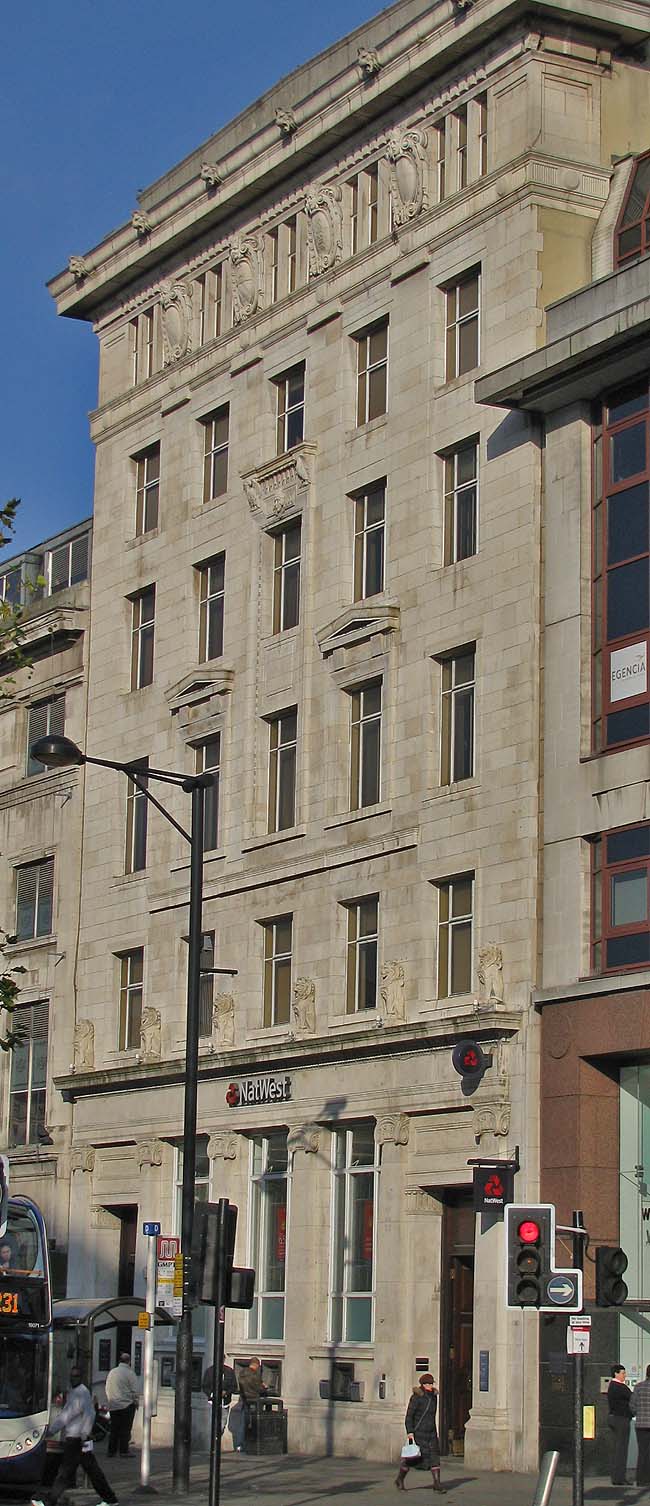 During its history it
has changed hands and roles on a number of
occasions. The Manchester and Country Bank gave
way to the Imperial Hotel. Then it became the
Manchester headquarters for the BBC. Today it is
once again a bank, this time a branch of NatWest.
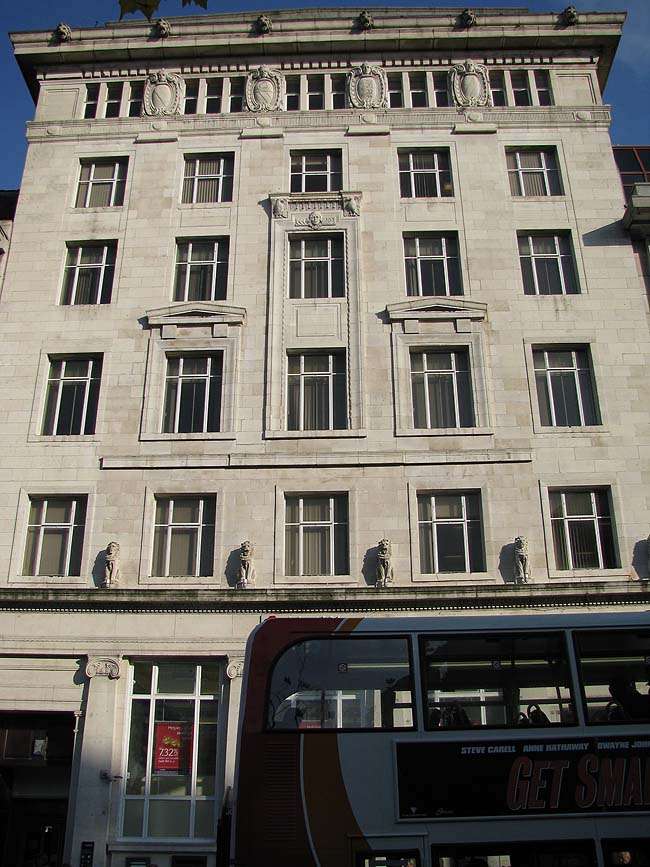 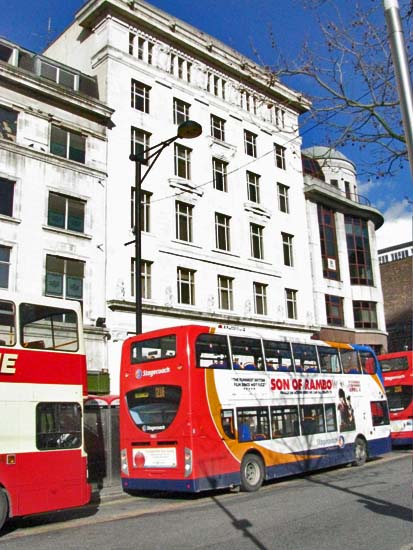 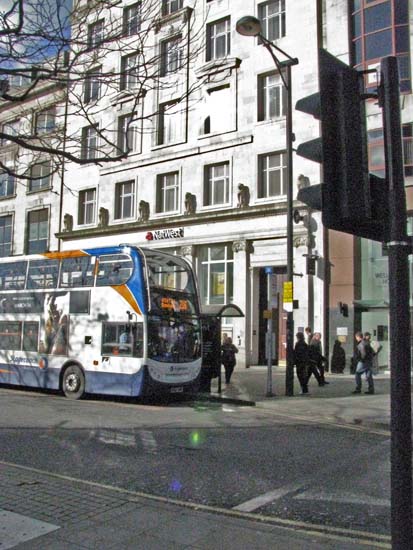 The block is concluded
with a modern building on the Lever Street corner
which houses a branch of the Nationwide Building
Society.
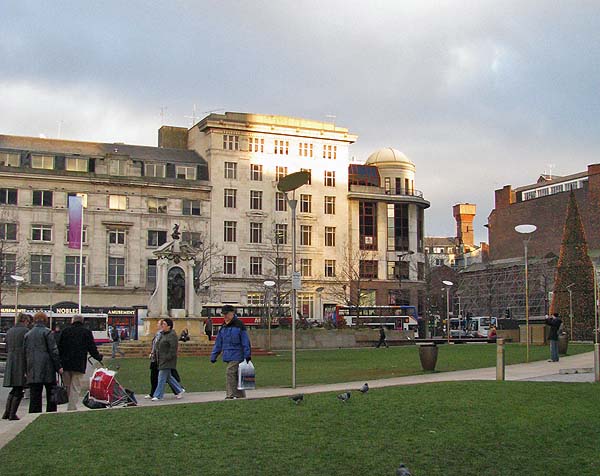 The building is called Wellington House, presumably because it stands across the street from the statue of the Duke of Wellington. 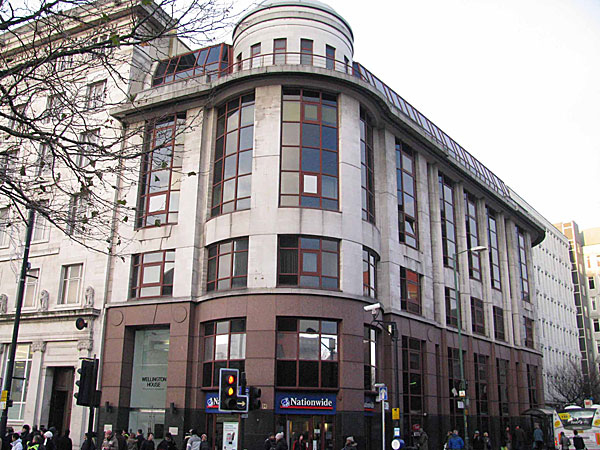 Below is an image from an earlier time.  ************************************* In 1888 the Albion
Hotel stood where Woolworth's was to be built and
beside it at street level was a series of shops.
The upper floors of the buildings were used as offices
and warehouses.
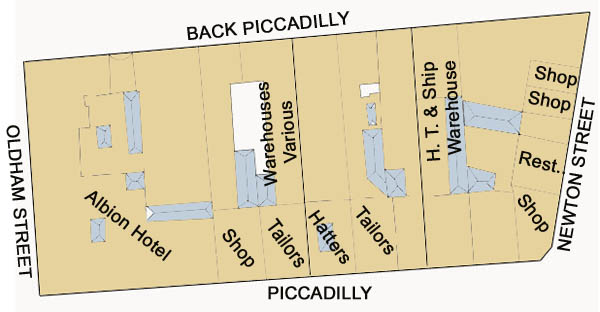 Here is a view of this
block of buildings in the 1800s. You can see the
Albion Hotel on the left and the awnings of the street
level shops further along. All of those
buildings are gone.
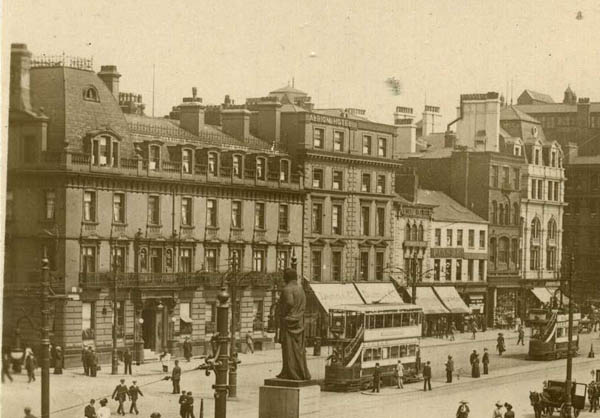 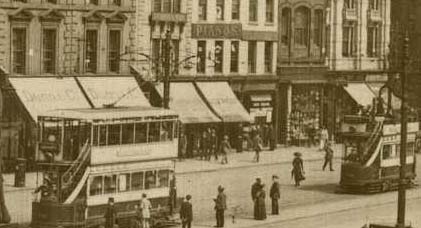 |